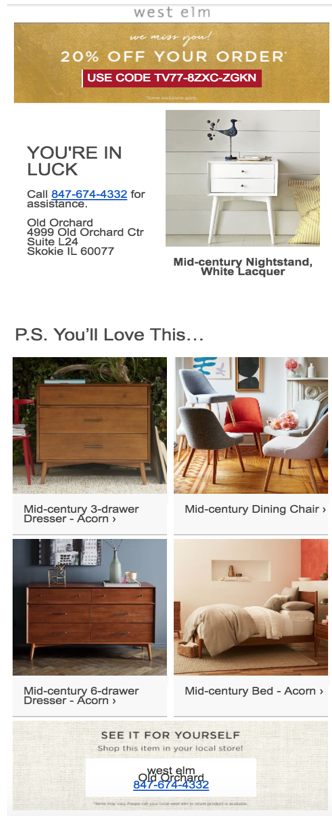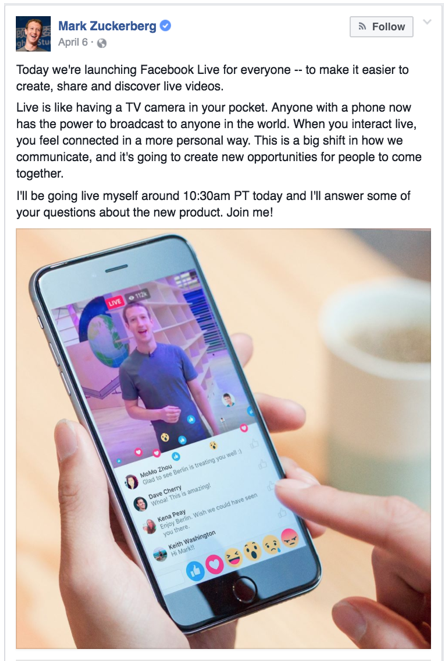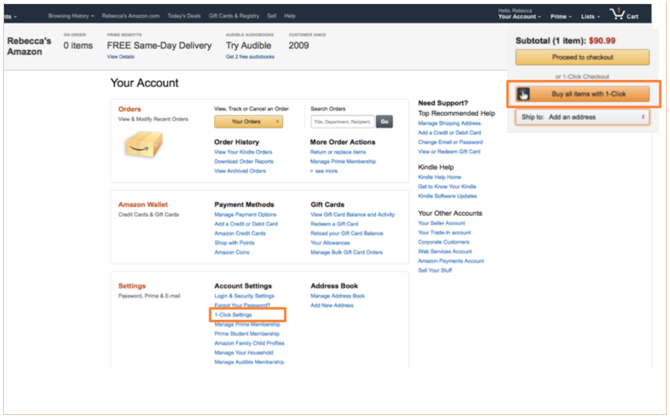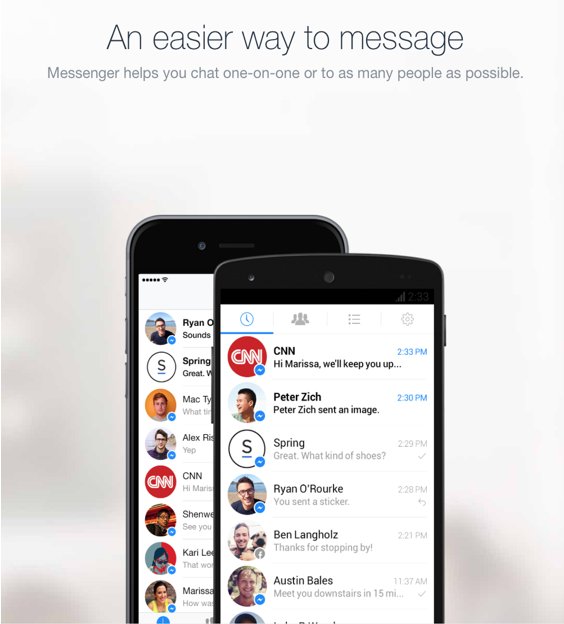
Get your FREE 30-day trial.
Please complete all fields.
While some are preparing their New Year's Resolutions, others have already begun hustling with their 2017 marketing plans and budgets. What are your new business and marketing goals? Where should you spend? Where should you focus your promotional efforts and campaigns? What are the latest social channels and mediums influencing your audience's purchasing decisions? Which technology and cultural shifts have emerged over the past year that can't be overlooked? Look no further than this 2017 Digital Marketing and Tech Outlook.
Online channels and cloud technologies dominate. According to MarketingLand, in 2013, internet ad revenues exceeded broadcast television for the first time. In 2015, digital continued to gain share, closing in on the total spent on all television (broadcast and cable) ads.
According to David Silverman, partner, PwC US, "Internet advertising grew 20% year-over-year in 2015. Three key disruptive trends - mobile, social, and programmatic - continue to fuel this exceptional rate of growth."
With new tools and technologies emerging, like our personalized digital marketing solution, Journey Builder and our Artificial Intelligence, or machine learning solution, Einstein, businesses and consumers are more connected and have more access to information than they ever have. So, here's what we will see fueling brand interactions with their customers in 2017.
Whether termed Artificial Intelligence, or machine learning -- gathering, connecting, and decisioning off of collected data points on a customer or business experience will be a part of many online, mobile, and social consumer and business interactions. This is a fancy term for how Siri knows what you're asking and gives you an answer, or how product recommendations show up in your inbox or webpage. Machine learning is taking note of what you're looking for and doing with a brand or system and using it in a productive way to provide you with ideas, customer service, or information.
In this example, 24 hours after searching online for a dresser, in hopes of helping me make a decision and purchase, West Elm sent me an email with the Subject Line: We found what you're looking for⦠The email even included the address and phone number of a nearby store based on my location data point. This is quick, efficient, relevant, and creative customer service.

West Elm furniture retailer follows up after web browsing with specific product recommendations and ideas just 24-hours later.
Google just announced they are testing mobile-first indexing in response to the majority of Google searches now occur on on a mobile device. Previously, Google had been serving up search results based on content on desktop websites, which may be different from mobile websites, thus providing an inconsistent experience for users. This is responding to increasing mobile usage and encourages businesses to structure their websites for both desktop and mobile to meet the needs of their customers so they can more seamlessly find what they are looking for. If Google makes a shift towards mobile, this makes a very clear statement that marketers should be dedicated to mobile campaigns, communications strategies, and smaller screens.
It's everywhere! Facebook launched Facebook Live in April, 2016, and in June, 2016, Google announced YouTube's live-streaming capabilities will soon be available to all users.. TV networks like ABC and NBC provide the option to stream live on any device, often with a login to cable providers. And, Hulu recently announced they will be launching live streaming of linear television as a subscription service. What does this mean for the digital marketing landscape? It's easier than ever for anyone to be a content creator or tune in and create or participate in a media community. It's also easier than ever for content publishers to let their customers into their brand experience and behind the scenes. While the industry shifted from linear broadcasting on a schedule to on-demand video, DVRs, and streaming services to watch anytime, anywhere, we're seeing a shift back to the excitement, exclusivity, and novelty of tuning in live to combat Fear of Missing Out (FOMO). It will be exciting to see what kinds of live experiences brands and their customers create together through live streaming.

Mark Zuckerberg announced Facebook Live availability in April 2016 for all users.
There are some new exciting developments that are transferring virtual experiences to tangible, reality experiences. For example, Polaroid released the Polaroid Zip Instant Printer, a phone-sized printer that doesn't need ink or toner and can print 2"X3" color photos wirelessly after edits or enhancements. The app, GiveKeepsake, allows users to upload photos from their phones to be printed, framed, and delivered with a few taps. Even though the trend is virtual and mobile experiences, we want to hold on to the human aspect of connection at our core.
Speaking of wireless photo printers, we're seeing more bluetooth, connected TV devices like Chromecast, and wireless headphones with Apple's shift to remove headphone jacks from their devices and the Macbook streamlined single port. The more we can connect, even if we forget our accessories at home, the better customer service and the easier it is to connect brands with customers.
If you haven't already tried Amazon's 1-click purchase feature, or Dash buttons, to order item refills with the tap of a connected device, this is just the start of the seamless buying era. 1-800 Contacts makes it easier than ever to auto-refill your eye contact lenses, Walgreens asks you to simply hit 'reply' on prescription refills, and you can sync your Discover Card with your Amazon account to get Cashback Rewards on purchases with the card.

Amazon's Account web interface includes 1-Click Settings, and the option to Buy all Items with 1-Click functionality.
Mobile payments still have a ways to go. Consumers may be skeptical, and infrastructure must be laid for adoption to continually grow. However, Business Insider projects an 80% compound annual growth rate in mobile payment adoption between 2015-2020. According to Business Insider and the Apple Q2 2016 earnings call, Apple Pay monthly users were up 450% year-over-year. In addition, three out of four contactless payments were made through Apple Pay. Contactless payments are made by radio-frequency identification (RFID) and near-field communication (NFC), or simply put, close proximity payments to a payment terminal, without direct contact between a credit card or form of payment and the receiver.
Facebook announced the new Facebook Pages Manager app in November 2016 helps businesses manage communications with customers on Facebook and Instagram without having to log into separate apps. This kind of unified experience for social marketers helps brands manage a singular customer experience - the way customers are using these apps - one person to one brand on many apps. Facebook also now has the capability for brands to use Facebook Messenger to have conversations with customers, enabling them to provide individualized customer service in a channel that's easily accessible and already widely used.

Facebook Messenger allows businesses to communicate directly with customers within the app that had previously been for individuals only.
So, there we have it. From machine learning to social customer service and seamless purchase experiences, the 2017 outlook for marketers and optimal customer experiences is looking bright. What else do you see on the horizon? Let us know in the comments!
About the Author:
Rebecca Otis is a Marketing Consultant at Salesforce, collaborating with clients to optimize their digital marketing and email marketing and mobile programs with the latest tools, technologies, and trends top of mind. She is also a blogger, writer for NBC Chicago, and speaker for groups like Goldman Sachs 10,000 Small Businesses, BlogHer, Startup Institute Chicago, University of Indiana Kelley School of Business, and DePaul University. She serves on the Social Media Club Chicago Board of Directors and was named an Austin Business Journal Women of Influence Profiles in Power Rising Star Finalist in 2012 after founding her own marketing consultancy. She's an avid Linkedin-er too. Let's connect @RebeccaOtis.